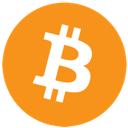Market Update
Crypto Adoption Continues For Banks, Companies & ETFs
 3 minutes
3 minutes
 3 minutes
3 minutes



The U.S. banking regulator, the Office of the Comptroller of the Currency (OCC), confirmed that banks can hold cryptocurrencies to pay blockchain network fees, also known as gas fees. These fees are necessary to utilise blockchains for tasks such as settling transactions or transferring tokenised assets. The approval covers major assets, including Bitcoin, Ethereum, XRP, and Solana, but only for operational use.
Until now, banks had to rely on outside companies to handle these fees on their behalf. That created extra cost, slower processing and more paperwork. Allowing banks to manage this process directly makes it more secure and efficient. Even though banks must still manage the price fluctuations associated with crypto, this marks the first time U.S. regulators have formally permitted banks to hold cryptocurrencies on their own balance sheets for day-to-day operations.
Alongside this shift, SoFi Bank has become the first U.S. bank to allow customers to buy cryptocurrency directly through their bank account. Taken together, these changes indicate that regulators and banks are becoming increasingly comfortable with crypto and are gradually integrating it into the mainstream financial system.
Bitcoin triggered a technical signal known as a ‘death cross’, which occurs when the 50-day moving average falls below the 200-day moving average. Generally, this can indicate a market cooling off and overall increased uncertainty.
This elevated uncertainty is also evident in the broader macro environment, making it harder to gauge the outlook for interest rates and other factors that are historically relevant for risk assets such as crypto.
Despite the uncertain short-term outlook, over longer timeframes, the structural demand drivers that matter more for Bitcoin are still demand from corporate treasury companies (e.g. Strategy) and steady ETF inflows.

Strategy, formerly MicroStrategy, added an additional 8,178 BTC to its balance sheet. This is the company’s largest purchase since July and continues its pattern of steady accumulation under Michael Saylor’s leadership. While the company has often purchased smaller batches over the past year, this move demonstrates its continued appetite for accumulating BTC.
With this latest purchase, Strategy now holds approximately 650,000 BTC, representing over 3% of the entire Bitcoin supply. The company stated that the purchase was funded through a combination of excess cash and newly issued shares, adhering to the same long-term treasury approach it has followed since 2020. Its stance remains simple: treat Bitcoin like a long-duration asset and accumulate whenever the balance sheet allows.

Fidelity launched its spot Solana ETF this week, marking the first time a global asset-management heavyweight has offered direct institutional exposure to SOL. This follows strong inflows into the recently approved Bitwise and VanEck Solana ETFs, which drew several hundred million dollars in their first weeks.
Small strategic allocations to crypto-based ETF products could have a material impact on the flow of funds, given that Fidelity currently oversees more than $17 trillion ($11 trillion USD) in client assets.

Alongside Solana, the U.S. is now seeing a wave of new single-asset crypto ETFs approved under the SEC’s more flexible framework. A spot Dogecoin (DOGE) ETF began trading this week, with the issuer, Grayscale Investments, pointing to DOGE’s deep liquidity and long trading history as justification. Despite Dogecoin’s high volatility and sentiment-driven nature, the ETF structure arguably makes it easier for retail and institutions to gain exposure without directly handling the asset. XRP has also entered the ETF lineup, with new issuers rolling out spot products that highlight its established market presence and high global trading volumes.
Taken together, these launches reflect a clear shift in the regulatory environment. The approval of multiple non-Bitcoin ETFs shows the U.S. is moving toward a more open stance on crypto-based financial products. Issuers now have a more straightforward path to introducing ETFs tied to large-cap assets, which reduces uncertainty and encourages broader adoption of these products.
Last week, a proposal was submitted to accelerate the time it takes for Solana to reach its long-term target inflation rate of 1.5%. Instead of taking about six years to reach 1.5%, the proposal (SIMD-0411) argues that it should take roughly three years.
In practical terms, this means 22.3 million fewer SOL would be created over the next six years, worth approximately $4.5B ($2.9B USD).
The primary benefit of this change is reducing the constant influx of new tokens entering the market, which creates selling pressure and can push prices downward. Lower inflation also means SOL holders won't see their ownership percentage diluted as quickly, and it may encourage more people to use SOL in DeFi applications rather than just staking it.
However, the downside is that SOL staking rewards would drop significantly. This would reduce income for validators who run the Solana network, potentially making it unprofitable for some smaller operators. The proposal is currently under technical review by Solana's core development teams and has not yet been approved or put to a validator vote.

SOL’s current inflation schedule, where the long-term inflation rate is still roughly six years away (Source: Anza)
Cash App recently announced it will support stablecoin transfers, specifically USDC, on the Solana network starting in early 2026. Cash App enables users to send and receive money, buy stocks and bitcoin. Led by Jack Dorsey, best known for co-founding Twitter, Cash App is one of the largest consumer finance apps in the U.S., with approximately 57 million monthly users.
The company chose Solana due to its low-cost, high-throughput design, which is well-suited for scalable consumer payments. This update also reflects a broader trend of prominent fintechs integrating Solana. PayPal, for example, has already expanded its PYUSD stablecoin to the Solana network, highlighting growing confidence in the network’s performance and reliability. If Cash App’s rollout lands as planned, it would represent one of the most mainstream touchpoints yet for Solana-based payments.
